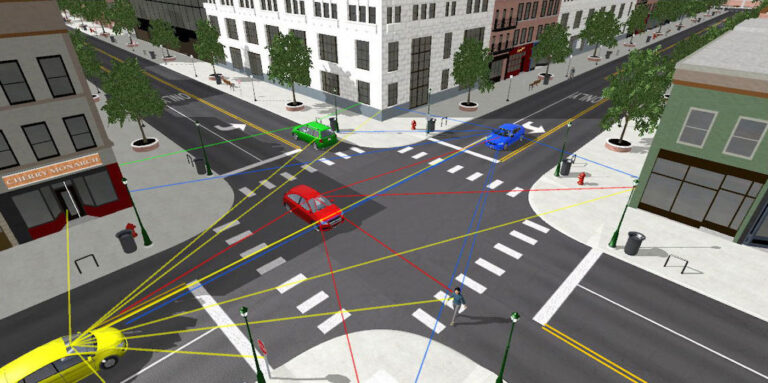Mechanical Simulation has released 2020.0 versions of its CarSim, TruckSim and BikeSim vehicle simulation tools, and its SuspensionSim suspension simulation tool. Uprades to the range, collectively known as VehicleSim, include built-in support for electrified powertrains, improved tools for making use of external data, refined capabilities for advanced driver assistance systems (ADAS) and autonomous vehicle (AV) technologies, and new features in support of high-performance computing (HPC) environments.
VehicleSim products can now drive multiple axles with hybrid or pure electric drives, with an added ability to mix hybrid and pure electric drive modes on the lead unit. It is also now possible to model e-AWD with electronically controlled torque distributions.
With the automotive industry developing new and more complex ADAS and AV technologies, the VehicleSim simulation tools have been extended to offer additional support for these applications. VS Terrain is used for importing road data from a wide variety of sources, including GPS and FBX. VS Terrain has been improved to clean up noisy data and reduce file sizes to allow more complicated environments to be used in real-time testing. The improvement in efficiency allow it to be supported on multiple HiL platforms. The addition of a command line interface (CLI) helps automate the pipeline of converting terrain data to VS Terrain file format.
The drag-and-drop environment building software, VS Scene Builder, has also been improved to switch more easily between right- and left-hand drive roads. This release also adds support for OpenDrive 1.5.
AV development demands more than a single vehicle operating in an environment. For that reason, a function was added to VehicleSim to set up multiple fully detailed ego vehicles in a single simulation, a feature which is useful for applications such as platooning and vehicle interactions. Multiple ego vehicle support can now be run on some HiL platforms.
In the world of AV development, Linux is the preferred platform, so 2020.0 can create feature parody between the VehicleSim products running on Windows and Linux. VehicleSim now supports these utilities on Linux: VS Connect for asynchronous data synchronisation between the Unreal and Simulink environments, VS Visualizer for animations and plots, VS Terrain for making use of external terrain data, Vehicle API for using the vehicle math models with other software, Unreal Plugin for advanced animations, and Docker recipes for scalable deployment to larger clusters.
AV development means running millions of miles of simulation whenever changes have been made, so 2020,0 VehicleSim has improved support for HPC in the form of a command line interface (CLI), support for Docker, and improved licence management designed for this use case.
“Over the past 25 years, VehicleSim has transformed from a vehicle dynamics software to a simulation test environment,” stated Dr Michael Sayers, CEO and CTO of Mechanical Simulation. “With the release of 2020.0 VehicleSim products are more scalable, easier to manage and more extensible. It has never been easier to put massive simulation power in the hands of engineers. Our goal is for engineers to accomplish in hours what used to take months or years.”





